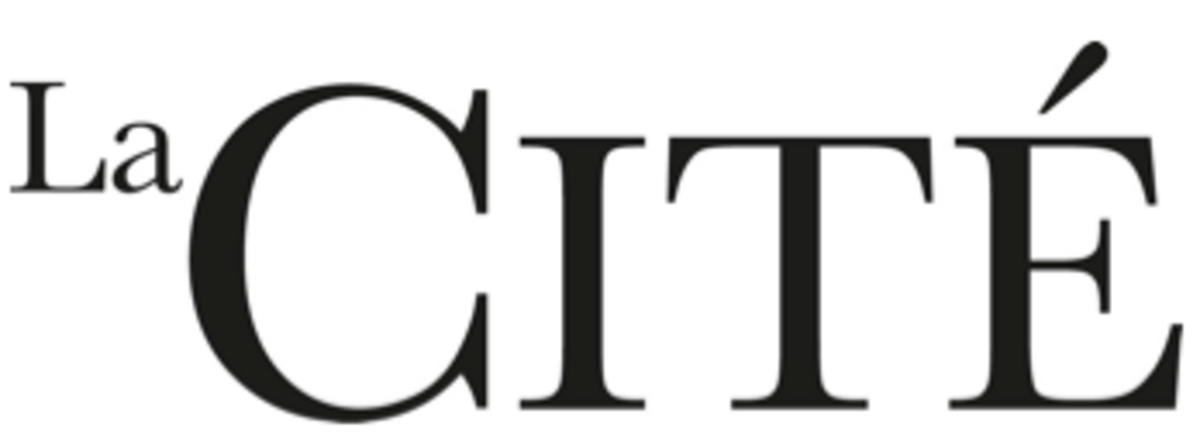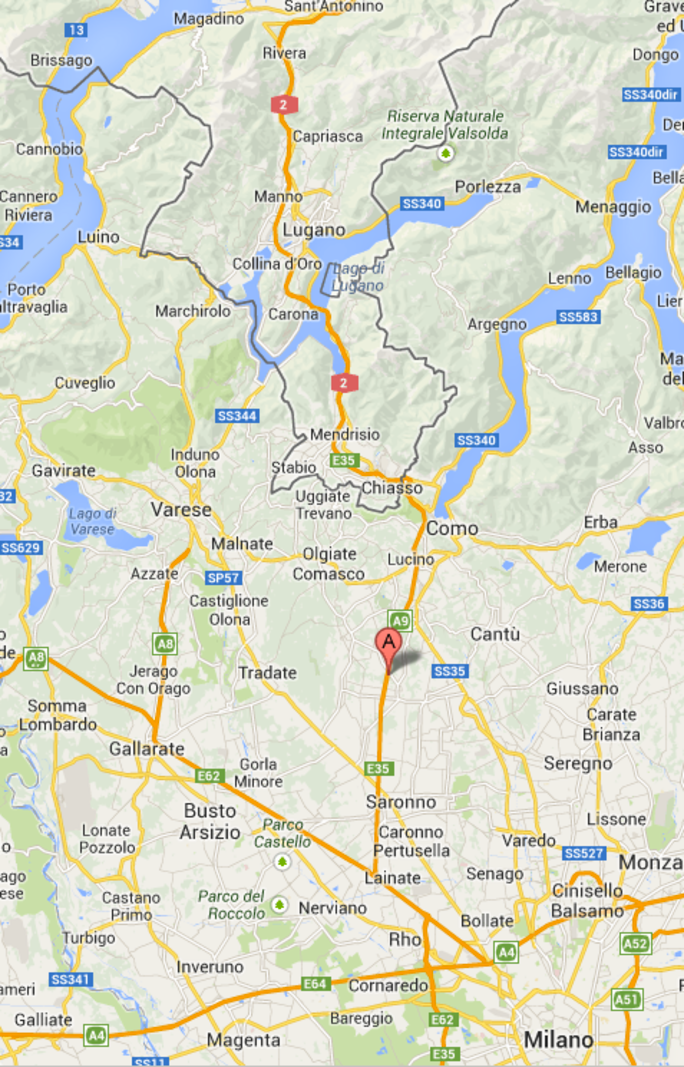
This report by Federico Franchini is published in partnership with the Swiss print and online news and features magazine La Cité.
-------------------------
In April 2013, a group of about ten hooded gunmen launched a spectacular attack on two armoured private security trucks carrying bars of gold along the A9 motorway that runs north from Milan to the small Swiss border town of Chiasso.
The scene was played out some 20 kilometres from the border between Italy and Switzerland, where the motorway runs through the Italian province of Come. The gangsters first blocked the motorway with two heavy lorries straddled across the lanes, before laying down three-spike nails to burst the tyres of the oncoming trucks. When these were stopped, they were showered with fire from Kalashnikov automatic rifles.

Enlargement : Illustration 2

The crews of the armoured trucks surrendered, abandoning their charge of 240 kilos of gold worth more than 10 million euros. The gangsters got away in three cars which were later found abandoned nearby.
Security trucks daily carry their cargoes of gold north along the A9 motorway, giving it the name ‘The Golden Road’. The destination is always the same: the southernmost Swiss canton of Ticino. According to the Italian national office of statistics, the ISTAT, 146 tonnes of gold were officially declared as having been transported to Switzerland from Italy along the A9 in 2012, up 22% on 2011. During the first ten months of last year, 90 tonnes were carried north.
Those are the figures for the legal trade, but there are of course few details concerning the clandestine traffic. Some of the latter travels hidden in a secret stash in modified vehicles, like the van pulled over by customs officers in the Italian border town of Ponte Chiasso during the Easter weekend last year. Inside the vehicle, driven by a 53 year-old Italian national, they discovered 110 kilogrammes of hidden gold bars wrapped in newspapers and tied with sellotape.
The driver was in fact a former member of the Guardia di Finanza, the Italian customs and financial crime police force, who now resides in Switzerland where he works for a company involved in the gold trade. The provenance of the gold bars was uncertain, for there were no identification stamps, nor even an indication of the purety (carat). The driver is expected to stand trial in Como on laundering charges.
“These past two years, the seizures of gold have risen in an exceptional manner, at least at the border crossings in the Province of Como,” commented Commander Alessandro Lucchini of the Guardia di Finanza, interviewed by Swiss TV just days after the van was stopped at Ponte Chiasso. In 2011, seven kilos of smuggled gold en route for Switzerland were seized by the Guardia di Finanza, rising to 58 kilos in 2012, and to 120 kilos during 2013.
But by all accounts, these hauls represent but a fraction of the yearly illegal traffic. The Italian authorities estimate that at least five tonnes of gold was successfully smuggled into Switzerland from Italy in 2013.
Surprisingly, when contacted for this report, the Swiss customs services in Lugano, in the canton of Ticino, claim they have no knowledge of the gold traffic. The office of the Swiss Federal Customs Adminsitration (AFD) in the Swiss capital Bern offered much the same response: “We have had, over recent years, just a few minor cases concerning contraband gold,” said an AFD spokesman. “We haven’t any statistical information about this matter.”

Enlargement : Illustration 3

The explosion in the gold trade is explained by the recent vast expansion in Italy of ‘Compro oro’ (meaning 'I buy gold') shops – small boutiques that offer private customers cash for gold – and which have mushroomed amid the economic crisis to currently total an estimated 30,000, with an estimated annual turnover of 9 billion euros. Similar shops have opened in Switzerland, where purchasers meet their clients for negotiations in confidential surrounds, often in discreet hotels. Business is done verbally, on trust, with no paper trail of receipts.
The mysteries of The Golden Triangle
In Italy, the ‘Compro oro’ trade is typically that of family jewels, watches and baptism gifts, sold by people hard-hit by the current crisis in return for a cash payment of a few hundred euros. The shops are the first chain in a wider and vast gold collection network. “The Compro oro shops have developed links with organised crime, as demonstrated by numerous police operations which have exposed cases of tax evasion, abusive credit rates, the handling of stolen goods and money laundering,” said Ranieri Razzante, a Bologna University professor specialized in legislation to combat money laundering, and a consultant for the Italian parliament’s anti-mafia commission.
Because of such problems, the municipal authorities of the Italian town of Tradate, in the Varese province, close to the Swiss border, prohibited the opening of two ‘Compro oro’ shops in 2011. The municipal decree, as cited by local newspaper Il Fatto Quotidiano, said the decision was taken to “protect citizens against the uncontrolled rise in criminality, which increases in proportion with the opening, and concentrations, of Compro oro.”
The surge in the number of ‘Compro oro’ shops has led to a surplus of gold in commercial networks, and it is part of this oversupply which is sent to Switzerland, both legally and illegally. Three of the world’s most reputed precious metal melting and refining plants – Argor-Heraeus, Valcambi and PAMP – are situated in the southern Swiss canton of Ticino, in the municipality of Mendrisio. They are authorised to melt down gold objects like rings, necklaces and coins to create gold bars, complete with the imprint of the furnace guaranteeing the origin of the bars as required by international regulations. Half of all the gold produced in the world transits through these three plants, dubbed ‘The Golden Triangle’.

Enlargement : Illustration 4

Dozens of international companies specialised in trading precious metals are sited in the Ticino towns of Lugano and Chiasso. None of those contacted in the preparation of this article agreed to be interviewed about the clandestine traffic in gold. According to reports published in both Italian weekly news magazine L’Espresso and regional daily La Nazione one of these traders based in Lugano is the subject of an Italian police investigation into the clandestine gold trafficking business, codenamed ‘Fort Knox’. Folco Galli, a spokesman for the Swiss federal justice office, the OFJ, confirmed that it had received an international cooperation request from the Italian authorities for help in their investigation, but that the preliminary administrative procedures before this is granted are still ongoing. To date, no judicial investigation has been opened by the Swiss authorities into the clandestine gold traffic.
During the 'Fort Knox' investigation, the Italian police succeeded in infiltrating the shadowy world of the Compro oro. In the autumn of 2012, they found evidence of the existence of a network that was involved in laundering gold bought by the shops. This centred on the towns of Arezzo, in central Italy, Marcianise, in the south, and Valenza in the north, where small gold objects sold to the Compro oro were clandestinely melted down into gold bars of just 10 centimetres in length so as to be easily hidden for transportation. These were then sent to Switzerland to be again melted and transformed into ‘legal’ gold bars that carry an official imprint of origin, and which can be subsequently traded in all legality. Between 2011 and 2012, it is estimated that this secret traffic of gold north to Switzerland amounted to 4,500 kilos of gold, with a market price of 170 million euros.
The Italian police believe that just one criminal organization, made up of 118 members, was behind most of that traffic, the rewards of which were distributed among more than 500 secret bank accounts.
Italian public prosecutor Mariano Fadda has led several investigations into the gold trafficking. Between 2006 and 2009, he uncovered a smuggling and laundering network that had transformed ‘secret’ gold into 90 million euros-worth of legal gold via Switzerland. One of those involved was a former director with the Argor-Heraeus melting company based in Ticino, who was caught with 16 kilos of gold secretly stashed in his car.
Officially, traders who use the Ticino furnaces for transforming gold objects into bars must submit to a strict series of controls, including proof that they have no criminal record, and must be able to offer guarantees on the origin of the gold that is to be melted down. In all probability, gold traffickers use stooges who can meet the required criteria, but for now none of them have been identified.
Discreet storage in Zurich's free port
Beginning in the 1970s and up until the end of the 1990s, Swiss banks invested in the gold trade, several of them becoming the direct financiers of the gold refining plants. Argor was a subsidiary of UBS, while Valcambi belonged to Crédit Suisse. Another, Metalor, situated in Neuchâtel, was owned by the Société de Banque Suisse (SBS). The three banks created the Zurich Gold Pool in 1968 and which was the world’s principle gold trading place until the early 2000s.
Over recent years, Italy has become one of the world’s leading gold exporters. It is no coincidence that the London Bullion Market Association, which represents banks, fabricators, refiners, shippers and brokers of precious metals, held its 2013 annual conference in Rome. While the Swiss banks have offloaded their ownership of gold refiners, they remain very active in the gold trade, notably through stakes in mining companies and also by investing in gold.
“During periods of major economic instability, investment funds that offer gold deposits are in vogue,” commented Sergio Rossi, a professor of monetary economics and macro-economics with the University of Fribourg in Switzerland. “In this context, the Swiss banks are key players on the world gold market. Attracted by the spectacular rise in prices seen over the last ten years, from 340 dollars per ounce in January 2003 to 2,500 dollars per ounce in December 2013 – and a price of 1,900 dollars per ounce in September 2011 – private Italian investors have bought gold massively following the beginning of the global and systemic financial crisis in 2008.”
This explosion in demand by private Italian investors has contributed to the huge expansion of the gold trade in Ticino over recent years, and which for some offers a new opportunity for tax evasion. “It suffices to make a trip to Lugano and Chiasso to see that alongside the official gold flux there is another, parallel one that is not recorded in national statistics and which is fed by more or less small transportations that cannot be quantified,” wrote Giuseppe Chiellino, a journalist with Italian daily Il Sole 24 Ore, in 2011.
Several companies in Ticino specialize in the rental of safes and vaults, and typically propose the safekeeping of jewellery and precious metals in all discretion, requiring no bank details and assuring their clients that no information is shared with foreign authorities.
Other companies, including Pro Aurum, a German-based business with offices in Zurich and Lugano, offer the rental of gold storage facilities situated in a Zurich free port, but with one important condition: the free port in Zurich requires that any single deposit of gold must exceed the value of 25,000 Swiss francs (about 20,500 euros). The rental cost is calculated according to the value of the precious metal that is placed in safekeeping. Importantly, gold placed in free ports can be sold on within these special economic zones where taxes and duties are particularly low, and even inexistent.
-------------------------
Federico Franchini is a reporter with La Cité, an independent Swiss online news and features magazine which also publishes a monthly printed version, and with which Mediapart has an editorial partnership agreement. Both Mediapart and La Cité can be accessed online by subscription only.
-------------------------
- The French version of this article can be found here.
English version by Graham Tearse


